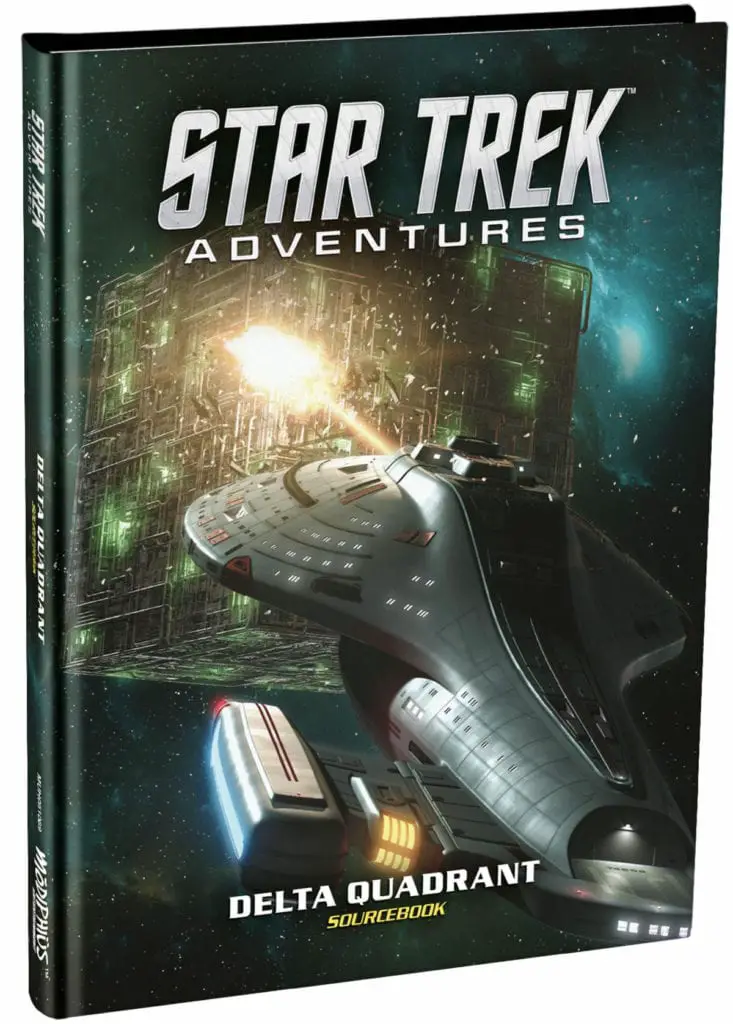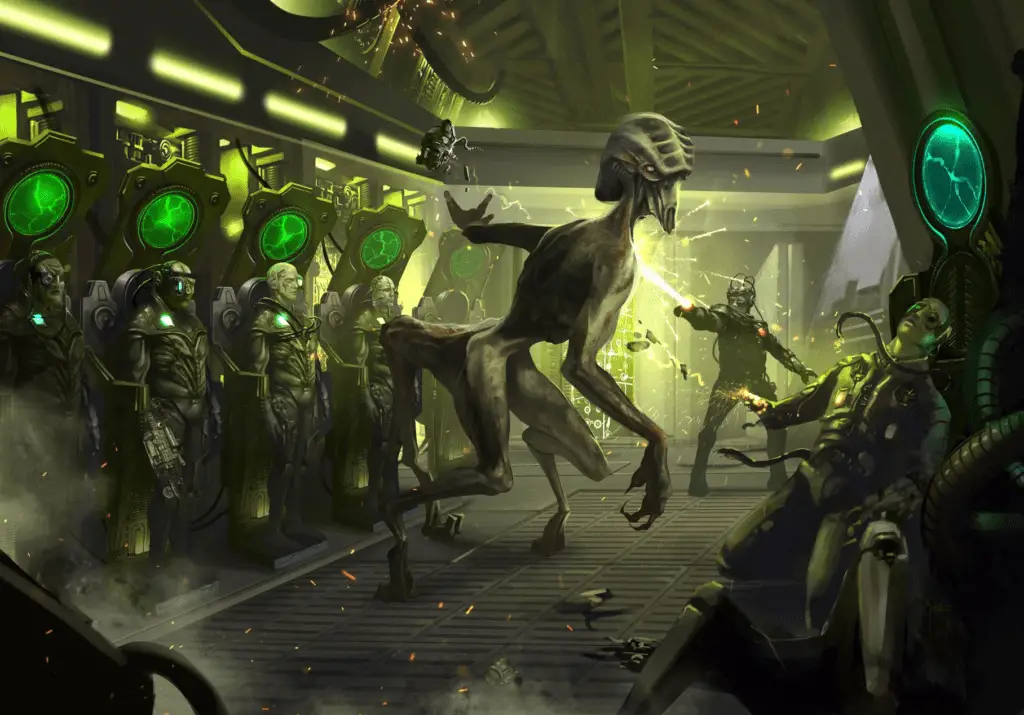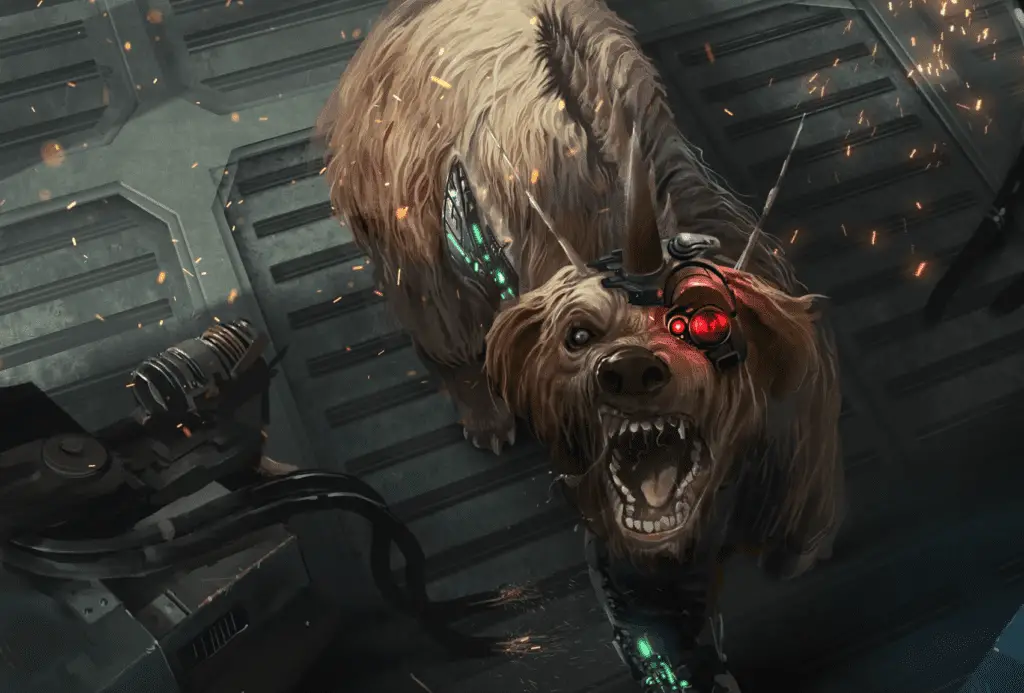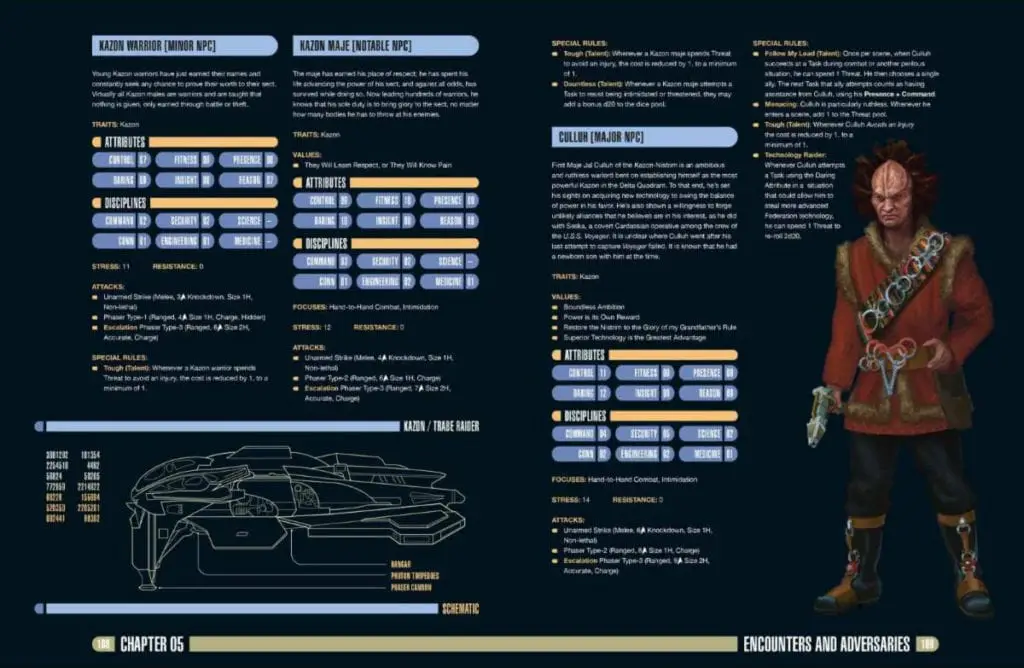Hello again readers! We’re back with another Star Trek Adventures review. This time, we’ll be covering the last of the Galaxy Quadrant books: the Delta Quadrant Sourcebook. Before I begin, an important disclosure: This book was provided for free by the nice people at Modiphius Entertainment. Those of you who are already Star Trek fans know what this book will primarily focus on, but for those who are new to the franchise: The Delta Quadrant was the primary location for the fourth Star Trek television series, Star Trek: Voyager. The show, unfortunately, is still contentious. Some people liked it for it’s return to a more exploration style of storytelling, and enjoyed the new characters. Others found the characters to be one note with an overreliance on ‘technobabble’ and poorer storytelling in general. It was with a bit of trepidation that I approached the book then, particularly since the other quadrant books are of generally high quality. Does this book measure up?
Well…for the most part.
The Book Itself

The Delta Quadrant Sourcebook is 135 pages long, counting the index, and like the previous books, continues the LCARS aesthetic. Chapter One is an introduction that explains the premise of the book. It also moves the timeline forward to the year 2379 (after the end of the Dominion War and the return of the USS Voyager) and offers some suggestions on how a Federation ship could have ended up in the Delta Quadrant.
Chapter two introduces us to several different species and powers of the Delta Quadrant, such as the Hirogen, the Kazon and Species 8472. The next part of the chapter briefly covers different stellar phenomena, and some of the different planets that the USS Voyager came into contact with. The largest, and most interesting part of this chapter is the last half, and deals with the Borg. An overview of how they function, the various types of drones, a quick examination of the role of the queen, how the Borg deal with primitive species, and even a look at what they Borg do with various different types of planets. It is, far and away, the most interesting part of the book.

Chapter Three goes over some of the various races of the Delta Quadrant. Now, I would say more about the different races, but even I don’t recognize some of them. That’s not to say they are all bad though. There are a few interesting options in there, particularly the Kobali, a race that reproduces by reviving the dead of other races and modifying them genetically. Chapter four follows the general trend and lists several different Delta Quadrant ships, including different Borg vessels.
Chapter Five is the last chapter, and deals with various adventures in the Delta Quadrant, as well as stats for various Delta Quadrant NPCs. Just like with chapter two though, the most interesting part of the chapter is the back half, which deals with the Borg. Several Borg NPCs and adventure seeds ranging from a logistical nightmare of having to evacuate a planet in advance of a Borg attack to a horror story involving a partially assimilated apex predator. There are also stats for the Borg Queen. A welcome addition for almost any game.
The Good
As I mentioned in the previous section, perhaps the greatest strength of this book is the addition of all the Borg information. They were severely underused in the previous books, and now there is a plethora of new adventure seeds, stats, and NPCs for every GM to use. And it’s not just basic plots but several horror-themed plots as well, which can add a spooky twist to a lot of campaigns.

But let’s not neglect the other parts of the book. While I’m not the biggest fan of Voyager, there were more than a few ideas in other parts of the book. Like I mentioned, the Kobali are a unique take on an alien race. In addition to that, some of the spatial anomalies mentioned could make for unique challenges for the players. And I’ll always appreciate a game that tries to push it’s timeline forward, even if this is about as far as it can go at the moment.
The Bad

Unfortunately, the book really doesn’t have that much to offer players or GMs who aren’t interested in a Delta Quadrant focused campaign. While the book does provide suggestions on how the players could conceivably be in the Delta Quadrant and still have contact with Starfleet, it’s a throw-away line at best, and really doesn’t give GMs or players much to work with. And, while I praised the book’s focus on the Borg if your campaign doesn’t prominently feature them in an antagonistic role, there’s really not much need for it. And that’s probably the biggest flaw for the book. Unless you’re looking specifically for stuff related to the Delta Quadrant and the Borg, you can easily skip this book and not miss anything of value.
“Keep your shirt tucked in, go down with the ship, and never abandon a member of your crew.”
Reviewing this book was pretty difficult for me. I am a completionist, collecting every RPG book in a given series, even if it’s bad, just to say I have it. But Star Trek Adventures: Delta Quadrant Sourcebook is not required for everyone. If you enjoyed Star Trek: Voyager, or are a huge fan of the Borg, then by all means get this book. You will love it, and not regret your purchase. If you aren’t…well, you can skip this one.
Images and review copy of book provided by Modiphius Entertainment.
Have strong thoughts about this piece you need to share? Or maybe there’s something else on your mind you’re wanting to talk about with fellow Fandomentals? Head on over to our Community server to join in the conversation!

